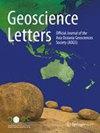The simulation of the Indo-Pacific warm pool SST warming trend in CMIP5 and CMIP6
IF 4.3
3区 地球科学
Q1 GEOSCIENCES, MULTIDISCIPLINARY
引用次数: 0
Abstract
This paper evaluates Indo-Pacific warm pool (IPWP) sea surface temperature (SST) warming biases of Coupled Model Intercomparison Project Phase 5 (CMIP5) and CMIP6. The IPWP warming trend in the CMIP5 multi-model ensemble (MME) is closer to observation than in CMIP6 MME, but the IPWP expanding trend is the opposite. There is no qualitative improvement in the simulation of IPWP warming from CMIP5 to CMIP6. In addition, four metrics were used to investigate the performance of Indo-Pacific region warming trends in all models. CMIP6 models perform better than CMIP5 with smaller root mean square error and bias in MME and higher skill scores in MME and top models, which is tightly linked to their better performance in simulating associated physical processes in CMIP6 models. IPWP warming biases are mainly attributed to the combined effects of positive atmospheric process biases and negative ocean dynamics term biases. The positive atmospheric process biases are primarily related to the shortwave radiation and latent heat flux from atmospheric forcing, the latter of which can be attributed to the biases in surface wind fields. Compared with CMIP5 models, the IPWP warming simulated by CMIP6 models is weaker, related to the less robust atmospheric processes and the shallower thermocline anomalies simulated by CMIP6.CMIP5 和 CMIP6 对印度洋-太平洋暖池海温变暖趋势的模拟
本文评估了耦合模式相互比较项目第五阶段(CMIP5)和 CMIP6 的印度洋-太平洋暖池(IPWP)海面温度(SST)变暖偏差。与 CMIP6 多模式集合相比,CMIP5 多模式集合中的 IPWP 增暖趋势更接近观测结果,但 IPWP 的扩大趋势则相反。从 CMIP5 到 CMIP6 对 IPWP 增暖的模拟没有质的改进。此外,还使用了四个指标来考察所有模式中印度洋-太平洋地区变暖趋势的表现。CMIP6模式比CMIP5模式表现更好,均方根误差和MME偏差更小,MME和顶级模式的技能得分更高,这与CMIP6模式在模拟相关物理过程方面表现更好密切相关。IPWP 的变暖偏差主要归因于大气过程正偏差和海洋动力学负偏差的综合影响。正大气过程偏差主要与大气强迫产生的短波辐射和潜热通量有关,后者可归因于地表风场的偏差。与 CMIP5 模式相比,CMIP6 模式模拟的 IPWP 增暖较弱,这与 CMIP6 模拟的大气过程不强和热层异常较浅有关。
本文章由计算机程序翻译,如有差异,请以英文原文为准。
求助全文
约1分钟内获得全文
求助全文
来源期刊

Geoscience Letters
Earth and Planetary Sciences-General Earth and Planetary Sciences
CiteScore
4.90
自引率
2.50%
发文量
42
审稿时长
25 weeks
期刊介绍:
Geoscience Letters is the official journal of the Asia Oceania Geosciences Society, and a fully open access journal published under the SpringerOpen brand. The journal publishes original, innovative and timely research letter articles and concise reviews on studies of the Earth and its environment, the planetary and space sciences. Contributions reflect the eight scientific sections of the AOGS: Atmospheric Sciences, Biogeosciences, Hydrological Sciences, Interdisciplinary Geosciences, Ocean Sciences, Planetary Sciences, Solar and Terrestrial Sciences, and Solid Earth Sciences. Geoscience Letters focuses on cutting-edge fundamental and applied research in the broad field of the geosciences, including the applications of geoscience research to societal problems. This journal is Open Access, providing rapid electronic publication of high-quality, peer-reviewed scientific contributions.
 求助内容:
求助内容: 应助结果提醒方式:
应助结果提醒方式:


